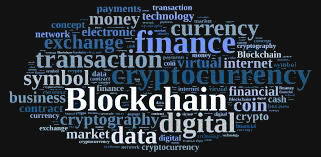





Published on Feb 21, 2020
Bytom is an interactive protocol of multiple byte assets. Heterogeneous byte-assets (indigenous digital currency, digital assets) that operate in different forms on the Bytom Blockchain and atomic assets (warrants, securities, dividends, bonds, intelligence information, forecasting information and other information that exist in the physical world) can be registered, exchanged, gambled and engaged in other more complicated and contract-based interoperations via Bytom.
Bytom (The Bytom Blockchain Protocol) will not be another Bitcoin, nor will it be Ethereum 2.0. Bytom is an intermediary connecting generalized blockchains with specialized blockchains. In the past, there has not been a complete and effective blockchain protocol for the purpose of exchanging diversified digital assets. Bytom is designed to be the public blockchain specifically for the area of asset management in an attempt to solve the following problems:
> What kind of blockchain is needed to carry digital assets.
> How to establish the mapping relationship between physical and digital assets , and resolve compliance issues.
> How to bridge the gap between the physical and digital worlds to promote effective flow of assets on-chain and off-chain.
The mission of Bytom is to bridge the digital world and the physical world, and to build a decentralized network where various digital and physical assets can be registered and exchanged. The goal of Bytom is to become the world’s largest dedicated public blockchain platform, connecting various asset classes to the blockchain, enhancing the liquidity, security, and value of theseassets.
Bytom will greatly promote the exchange and flow of “byte information” and “byte assets” with value attributes, and via contract and configuration create new “byte assets”. Bytom is also a type of intermediary, becoming an economic body generating profit from data and an amplifier to the performance of digital assets. In the future, these digital assets will not only be used in daily life, but can also be artificial intelligence, provide “digital food” for equipment in the Internet of Things, and to increase the influence of the digital world on the physicalworld
Bytom Coins are the native asset on the Bytom Blockchain. Bytom Coin’s value comes from its ability to easily characterize and measure the digital economic activity on the Bytom Blockchain. Bytom Coin represents both the ownership of the Bytom Blockchain and the right to use it: use of the Bytom Blockchain will incur a fee in Bytom Coin, reflecting the right of usage characteristic of Bytom Coin; holding Bytom Coins represents owning a piece of the Bytom Blockchain, essentially being a shareholder of the Bytom Blockchain, and therefore able to participate in the highest-level governance of the Bytom Blockchain, reflecting Bytom Coin’s ownership characteristic. (For the specific structure of management, refer to “Three, Management of Bytom”.)
Bytom consists of three layers: data transaction and transmission layer, contract layer and asset interaction layer.
BIP32, BIP43 and BIP441are used in the design of Bytom wallet to provide support for multi-currency, multi-account, multi-address and multi-key with Hierarchical Deterministic Wallets (or "HD Wallets").
The asset management and operation of Bytom involves private key, public key and address system, which is achieved through ESCDA encryption and SHA256 hashing in Bitcoin’s design.
POW algorithm that is friendly to AI ASIC-chips Use a new POW algorithm, Matrix and convolution calculation is introduced into the hashing process so that the miners can be used for AI hardware acceleration services.
The naming of assets will follow ODIN (Open Data Index Name) standards to ensure the uniqueness of assets across the entire network and blockchain.
Separate transaction signatures from the rest of the data in a transaction
In Bytom’s design, there is a DLT protocol that allows interaction between a variety of assets.
Unlike the Ethereum account model, BUTXO can verify transactions in parallel by adopting a mechanism similar to nonce to ensure that each unspent outputs could only be quoted by one transaction.
Cross-chain asset dividends distribution through side-chain Developers can create a tiny version of the X chain (other blockchains) or Xrelay based on Bytom platform,They could also perform API calls via smart contract to verify network activities on X blockchain, thus achieving cross-chain communication, asset transaction and dividend distribution in the contract.